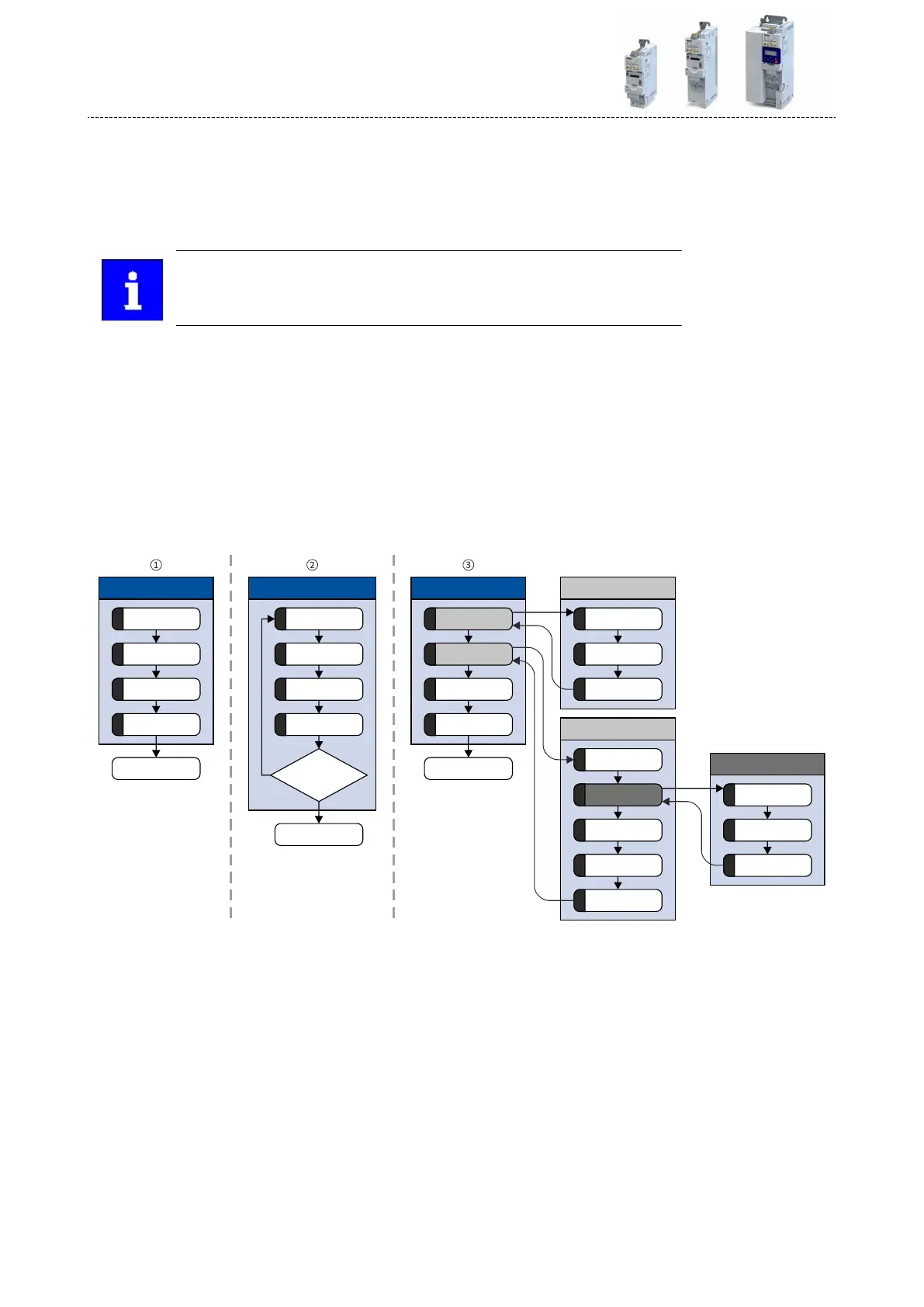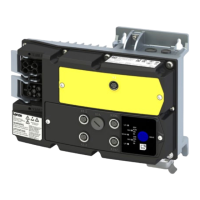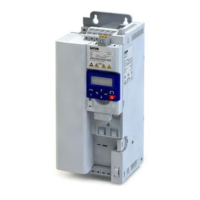12 Sequencer
The "sequencer" funcon serves to transfer a programmed sequence of setpoints to the
motor control. The switch-over to the next setpoint can be made me-controlled or even-con-
trolled. Oponally, the "sequencer" funcon can also trigger the digital and analog outputs.
The sequencer only generates setpoints. However, the sequencer does not con-
trol the motor operaon (does not output any start and stop commands).
Basics: Sequences, steps and segments
•
As a total, 8 sequences can be congured (with the numbers 1 to 8).
•
Each sequence consists of 16 congurable steps.
•
Each step of a sequence can call a "segment".
•
A segment contains, among other things preset setpoints (speed setpoint, PID control
value, torque setpoint), a combined acceleraon/deceleraon for the speed setpoint
and oponally a conguraon for the digital and analog outputs.
•
8 dierent segments and one end segment can be congured.
•
Alternavely to calling a single segment, a complete sequence (with a higher number) can
also be called from one step. This serves to implement nested sequences or summarise
several sequences to one sequence.
1
2
3
4
1
2
3
4
1
2
3
4
1
2
3
1
2
3
4
5
1
2
3
Sequence 6
Segment 8
Segment 7
Segment 5
Sequence 3
Segment 1
Segment 3
Segment 4
Sequence 6
Segment 4
Sequence 2
Segment 3
Segment 2
Segment 1
End segment
Sequence 1
Segment 8
Segment 7
Sequence 3
Sequence 2
No
Yes
End segment
Sequence 1
Segment 2
Segment 3
Segment 2
Segment 1
End segment
Number
of cycles passed
through?
Sequence 2
Segment 8
Segment 7
Segment 6
Segment 1
①
Simple sequence with four steps.
②
Simple sequence with four steps that are passed through several mes (number of cycles > 1).
For each sequence, the number of cycles can be set individually.
③
Nested sequence: Other (sub) sequences are called by one (main) sequence.
Sequencer
504
